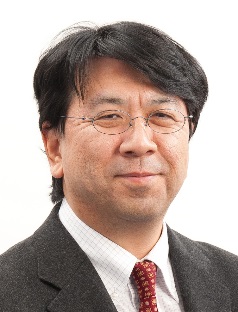
演講地點:新竹交通大學光復校區工程四館528室
Title of Talk: Implantable optoelecronic biomedical devices
Speaker:
Prof.Jun Ohta
NAIST
Abstract of Talk:
Recently, combination of genetic engineering and optical technology makes it possible to bidirectional optical communication with brain. By introducing gene transfer technology, fluorescent protein such as GFP enables an optical tag, and photoactive protein such as ChR2 enables optical manipulation. Conventionally, a fluorescent microscope has been used for imaging and optical stimulation. It is, however, difficult to apply the method to a freely-moving mouse due to its requirement of fixing the mouse under a microscope stage. We have developed a miniaturized optoelectronic device which employs a dedicated CMOS image sensor and micro light emitting devices (LEDs), and can be implanted in the deep brain of a mouse to optically measure and control the brain functions of the mouse. The device is so light in its weight that a mouse implanted the device can move freely. In this presentation, I introduce some kinds of optoelectronic devices for measuring and controlling biological functions of freely-moving mice. Next, I describe our developed optoelectronic devices that can be implanted in a mouse deep brain. The fundamental device structure and performance are mentioned and some experimental results in vivo are demonstrated. Finally, future direction is addressed for achieving bidirectional optical communication with brain.
.jpg)
Speaker:
Prof.Toshihiko Noda
NAIST
Abstract of Talk:
High-density stimulation of retina is required to achieve high resolution, which is demanded as next-generation retinal prosthesis. Dense-arrayed stimulus electrodes are key element of the next-generation retinal prosthesis. Important properties of the electrodes are sufficient stimulus capability and thin lead wires. In this study, high performance electrodes using iridium oxide (IrOx) as electrode material have been fabricated as a collaboration work with NCTU. Not only material approach but also introducing of 3D structure has been discussed to enhance the electrode performance. The other approach for next-generation retinal prosthesis, which is smart-wiring technology with CMOS microchips, was also investigated. A prototype of smart-electrode with a built-in CMOS microchip was successfully fabricated. Ex-vivo and in-vivo experiments were performed as functional validation. As a result, the concept of the smart-electrode was successfully demonstrated. High-performance IrOx electrodes and smart-electrode technology with CMOS microchips will enable the fabrication of a multi-channel (i.e., more than 1,000) electrode array.
.JPG)
圖為Prof.Jun Ohta及Prof.Toshihiko Noda演講合影。